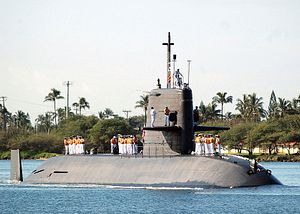Two new pieces of information came out on Tuesday regarding Prime Minister Shinzo Abe’s push to normalize Japan’s military capabilities. The first concerns the ongoing coalition discussions between the LDP and its junior partner New Komeito, as Abe is looking to do away with the concept of “non-combat zones” for the Self-Defense Forces. The second involves Japan’s new attempt to bolster security ties with Australia by increasing their level of arms trade.
First, the current coalition government discussions surrounding the reinterpretation of Article 9 of the Constitution have settled around the issue of “non-combat zones,” which defines how the SDF can be integrated into other countries combat operations. The restriction theoretically bans the SDF from actions such as providing logistical support in combat zones, ammunition and arms to coalition troops, or even refueling U.S. aircraft en route for combat missions.
The Abe government wants to remove this standard, and the Japan Times quoted a high-ranking official within the LDP as saying the removal of this concept could allow Japan to provide arms and ammunition to allied troops in active combat. However, New Komeito has not been supportive of this idea, with its vice president Kazuo Kitagawa saying the new standards “could allow the SDF to conduct any missions other than actual combat. We asked the government to come up with concrete examples as to what the SDF can and cannot do if these standards apply.”
As The Diplomat noted last week, Japanese officials are interested in selling submarine technology, and perhaps a fully outfitted fleet, to Australia, and talks slated for later this month will focus on this issue. On Tuesday, Japanese Defense Minister Itsunori Onodera reemphasized this, saying he wants to meet with Australian Defense Minister David Johnston and “push along discussion with Australia on agreeing a framework to cooperate in defense equipment and technology,” according to Reuters. The foreign ministers for both countries are also expected to meet in Tokyo, although a date has not yet been set.
So far Abe’s LDP has been unable to make much headway with New Komeito toward creating a unified position on changing the government’s interpretation of collective self-defense. Even concerning “grey-zone issues,” where both parties are mostly in agreement, there has been little public progress. Yet the Abe government still maintains that it wants to see the collective self-defense changes embodied in the Constitution before the Japan-U.S. defense cooperation guidelines are revised at the end of the year.
Pushing for new partnerships in military technology is a way to build on Abe’s past success in this sphere. Since he was able to end the ban on military exports in March, Abe can now show the benefit in this trade, as Australia has budgeted $37 billion to develop its next fleet of submarines. While signing this deal with Australia may have limited impact on the traditionally pacifist New Komeito, it is another way for Abe to demonstrate to the public the benefits of his new normalized military strategy.

































